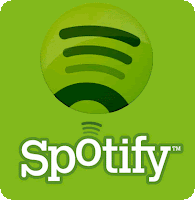_______________________________________________________________________________
"Those who don't know history are destined to repeat it."
"Those who don't know history are destined to repeat it."
~Edmund Burke
_______________________________________________________________________________
In the late 19th century the gramophone disc took over phonograph cylinders as the standard in recording technology. By 1910 the 78, 10-inch shellac record became industry standard. Technical limitations of the disc forced recording artists to tailor their work to the medium thus creating shorter songs and only releasing one or two "singles" at a time. It wasn't until the 1960's that this format changed.
In the 1940's the FCC understood that radio broadcasters would eventually run out of spots in the then used AM bandwidth. To counteract that they forced large scale AM stations to maintain an FM channel as well. For years these broadcasters did nothing more than duplicate the programming on both channels then In July of 1965 the FCC made another ruling that broadcasters could not duplicate
programming on both FM and AM dials in major US markets. This sent programmers searching for a
cheap way to fill dead air on their FM stations.
Luckily for these programmers a new standard record size was emerging. A 12" disc allowed artists and labels to press more than one track into the vinyl. DJ's and radio programmers realized they could fill up hours of time on their FM stations by playing these "albums" in their entirety and the idea of Album Oriented Rock was born.
Album Oriented Rock and the new FM channel changed the way in which the business of music was done. All of the sudden new recording artists had to create and entire collection of like minded songs to include on one record. The record deal changed too to cater to this new distribution method with new artists finding themselves signing contracts tying them to three or more albums with the label.
Now the single didn't die completely. It was only changed from the main source of revenue into a marketing tool to get people to purchase the entire album for a heftier price tag. Throughout the 80's this method made the record labels millions upon millions of dollars.
Then the Internet was born and consumers quickly found a way to share their music over phone lines through companies such as Napster. The problem with the new Internet delivery method was that bandwidth was low during the early days of the medium which meant that music files needed to be compressed and sent as singles to other users.
For years the industry fought this new delivery method as fans became pirates giving away and taking music without retribution to the artists, but that's another story. To combat this problem the industry began endorsing online music storefronts such as Apple's iTunes to distribute their medium, but by the time they finally found a way to make money in the new online world the market had changed.
Underneath all of the piracy fans had developed a new taste in the acquisition of their music. They didn't want the entire album because it took up so much of their personal time to find and then download. Instead they started downloading single tracks that appealed to them from various artists. By the time Apple took over with the iPod and iTunes the market had changed. A new generation of music consumers emerged that didn't want to pay $20 for an entire album for just one track as they had done in the past. They wanted their music instantly which meant that single files were the way to go, and through their test phases with piracy and peer-to-peer sharing they wanted to create their own musical experience through customizable playlists. The market had spoken. They wanted singles again.
Once again the music industry has changed, and once again we witness the cold hard fact that history is doomed to repeat itself. Luckily for us this time the repetition is producing larger sales numbers then we could have imagined. Unluckily those numbers are for much smaller unit prices.
Keep this in mind. If history is due to repeat itself then that means the album should come back around. Over recent years ISP's have increased the average level of bandwidth for the end user and they have opened up new channels of distribution through smart phones, and wireless Internet delivery systems such as 3G and 4G. When it comes to price points the labels have decided to challenge Apple's huge capitalization of the market by offering cheaper prices to other retailers such as Amazon who are offering entire albums for as low as $1.99. These small facts make it possible for the fans to afford full albums once again and download them quickly thus fulfilling their needs.
The biggest issue the labels and artists face in eventually recapitalizing on the sale of entire albums is the quality of the material they offer to the public. For the past decade the industry has shifted back to the pre-1965 single distribution method and with that they have focused on creating only one or two strong hits at a time. To truly recapitalize on the return of the full length album market the industry will have to once again fully develop and nurture artists to their fullest rounded potential so they can once again create entire albums that appeal to their fans.
For now the single once again reigns supreme. This time it isn't on a ten inch shellac disc. It's in a five by three inch phone.









